Service Introduction
All filled-in information must be valid and must reflect the actual mail item’s contents. Provision of false or misleading information may lead to delay in delivery, detention, seizure by the customs authorities of the destination, or return of mail item to the sender.
1.)Senders can access the function page of customs declaration via CTT’s website or mobile application:
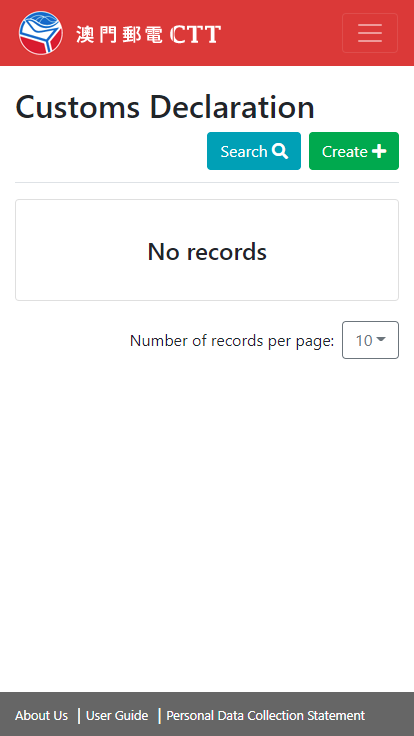
2.)Press “Create” button to create a declaration record:


3.)Fill out the information of sender and addressee:
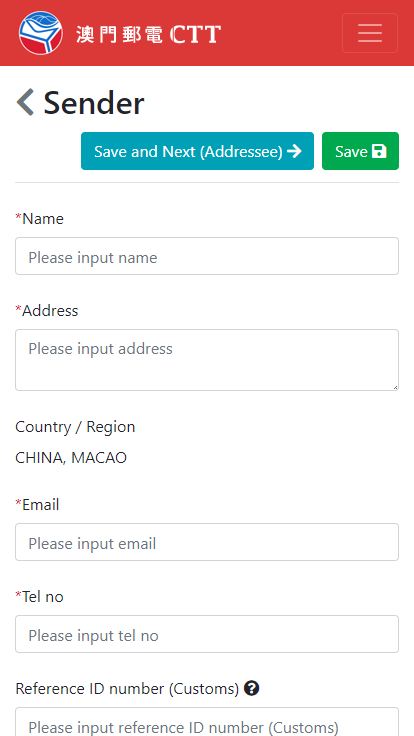

4.)Choose the category of mail item:
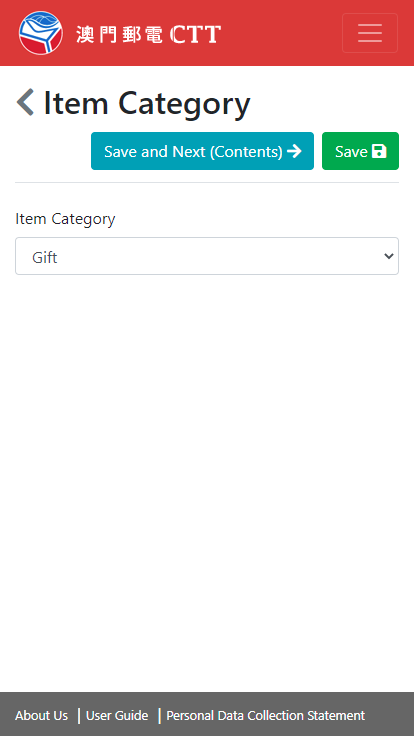
5.)Fill out the information in details for each good contained in mail item:
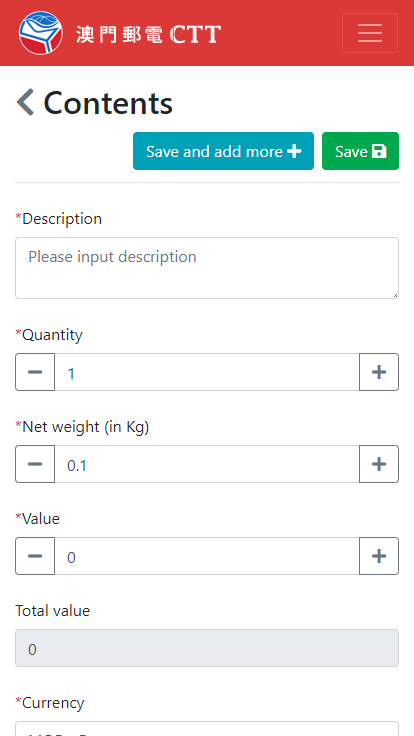
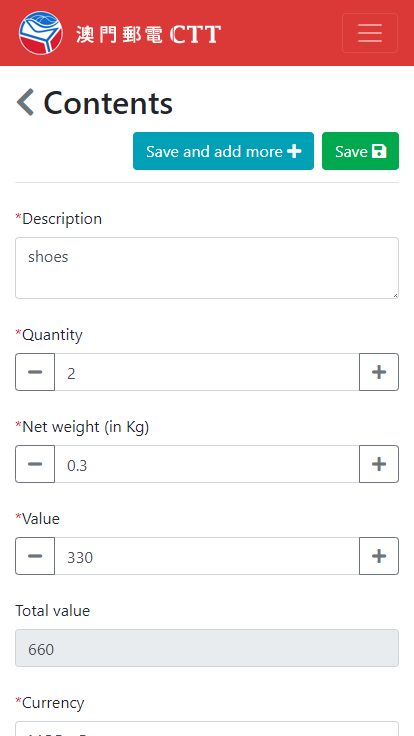
Attention: the input of HS (Harmonized Commodity Description) code is optional; however, senders shall provide the necessary information about the mail items, written in the official language of the destination or in English.
What is Harmonized Commodity Description and Coding System (HS)?
Harmonized Commodity Description and Coding System, usually referred to as Harmonized System (HS), is a standard code list compiled by the World Customs Organization for the classification of international trade commodities to unify the classification of international import and export trade commodities by customs around the world. The World Customs Organization will provide updates and revision suggestions in response to the development of international trade and commodity markets. “The Nomenclature for the External Trade of Macao/Harmonized System”, the local coding table adopted in Macao is released by the Statistics and Census Service in accordance with the relevant revision suggestions and the needs of local commodity markets.
6.)Press the “Save” button after filling all the necessary information. The status of application will become “pending” (waiting for sender to proceed to CTT’s counter for posting).

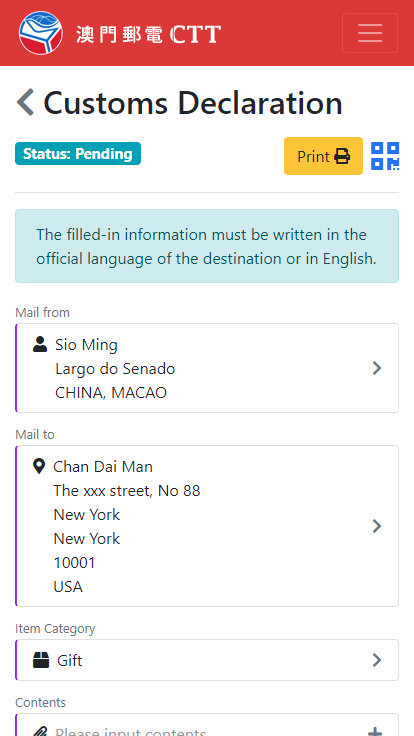
7.)Lastly, at the CTT’s counter, select the declaration corresponding to the item to be posted by clicking the corresponding “right arrow” button. After that, click the “QR Code” button at the top right corner to generate QR code and then show the code to CTT’s counter staff who will verify the posting information.

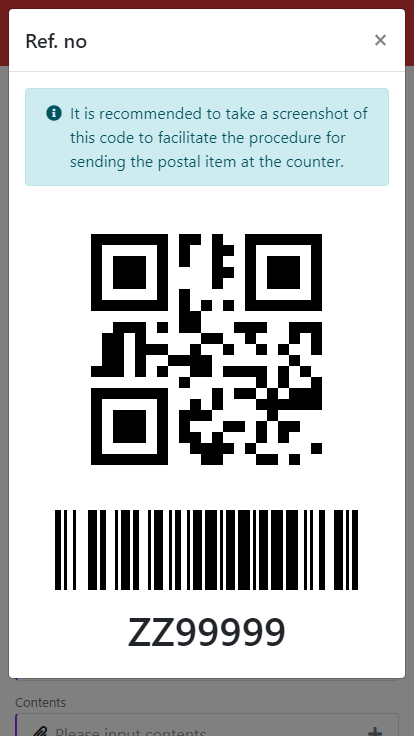
8.)To modify previously filled-in information, before posting at the counter, please click the corresponding item’s right arrow button to access the declaration information page and click the save button after the modification.
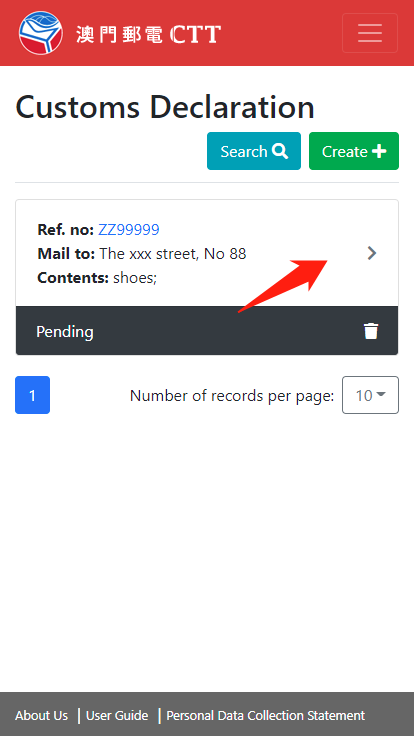
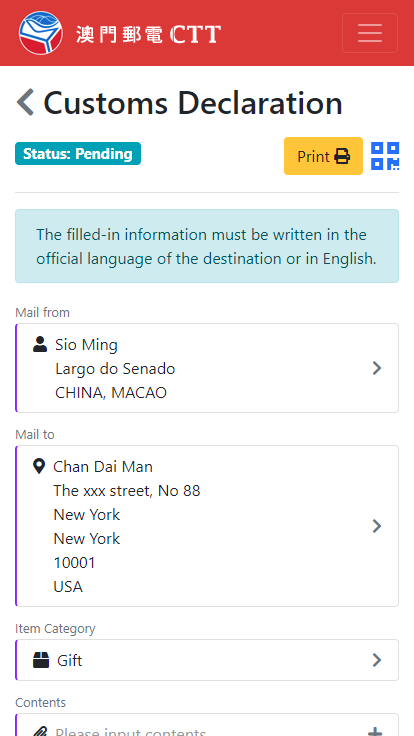
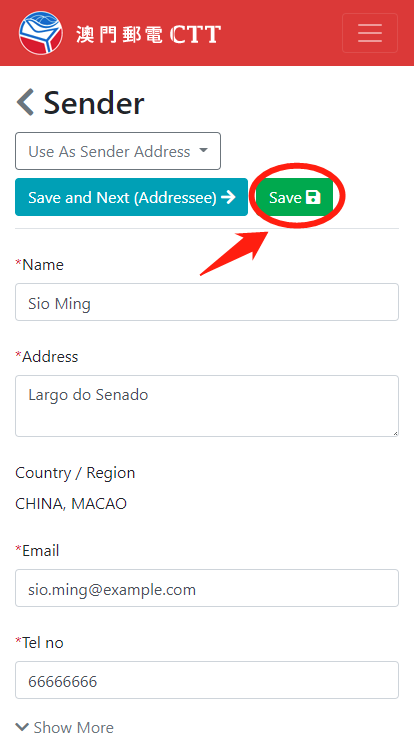
Starting from July 1, 2021, all goods imported into the EU* are subject to VAT. Regardless of the value of the goods, value-added tax (VAT) is required.
The main changes of the rules include:
- a) Elimination of the exemption of import value-added tax for goods below 22 euros, and all goods imported into the EU are subject to value-added tax (VAT).
- b) For goods with a value of no more than 150 euros, the seller/platform will be required to pay VAT; for goods with a value of more than 150 euros, the recipient can pay the tax upon arrival at the destination.
- c) The European Union has launched Import One-Stop Shop (IOSS for short) to facilitate senders to declare and pay VAT on imported goods with a value not exceeding 150 euros.
Changes to EU value-added tax (VAT) rules
| Type of Goods | Declared Value | VAT measures before July 1, 2021 | VAT measures from July 1, 2021 |
|---|---|---|---|
| B2C (cross-border Business-to-Consumer) | Less than 22 euros € | Exempted from VAT | VAT required, sender** pays |
| 22-150 Euro € | VAT required, recipient pays | VAT required, sender** pays | |
| 150 Euro € or more | VAT and clearance charges required, recipient pays | VAT and clearance charges required, recipient pays |
Use of IOSS (B2C only - for products up to 150 Euros):
1. The European Union has launched a scheme called Import One-Stop Shop (referred to as IOSS) for customs clearance of goods. Merchants (senders) in non-EU countries can register their own IOSS number by using the following website or through an IOSS intermediary (each merchant can only have one IOSS number). Afterwards, they can declare and pay taxes for all EU member states at once.
https://ec.europa.eu/taxation_customs/business/vat/vat-e-commerce_en
2. Merchants (senders) who have registered their own IOSS number, when using the electronic customs declaration system of CTT, must fill in, apart from the basic customs declaration information, also the IOSS number in the "Reference ID number (Customs)” field as shown in the red circle in the figure below.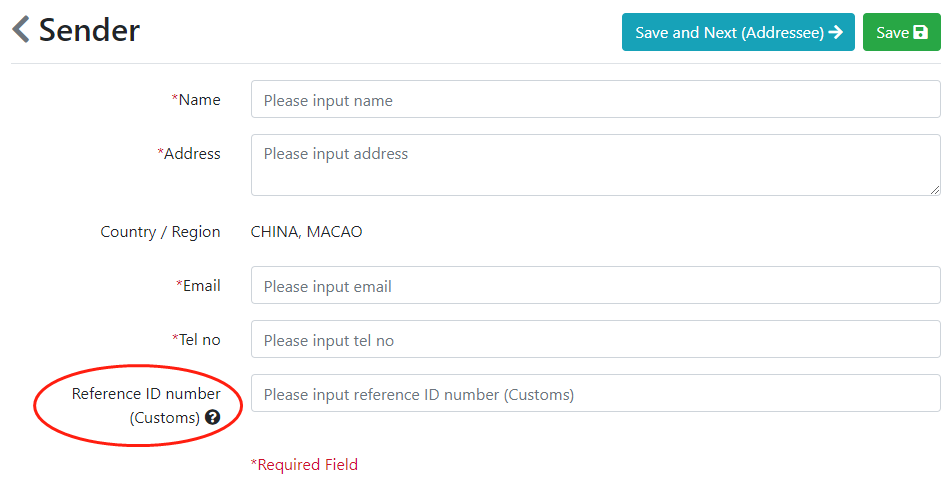
* EU countries include the following 27 countries: Austria, Belgium, Bulgaria, Croatia, Cyprus, Czech Republic, Denmark, Estonia, Finland, France, Germany, Greece, Hungary, Ireland, Italy, Latvia, Lithuania, Luxembourg, Malta, Netherlands, Poland, Portugal, Romania, Slovakia, Slovenia, Spain, Sweden.
** If the merchant (sender) does not use the IOSS platform, the customer (recipient) will need to pay VAT at the time of customs clearance of goods in accordance with the current procedures before receiving the goods (the actual tax rate varies with each EU country, and the latest tax rate information published by the importing country shall prevail).

